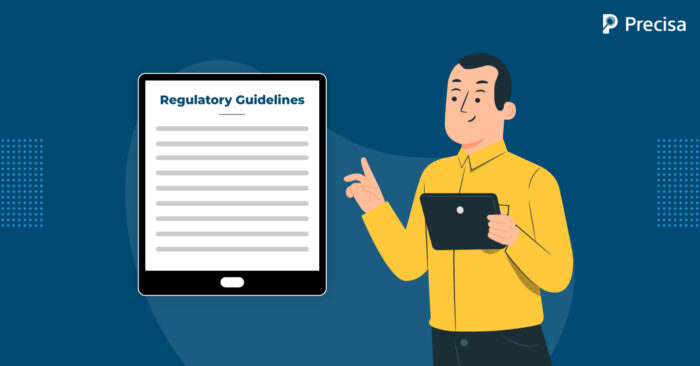RBI’s New Digital Lending Norms to Address Rising Financing Needs

According to Statista, the digital lending market has grown from 9 billion dollars in 2012 to nearly 150 billion dollars by 2020. It is projected to reach around 350 billion dollars by 2023.
Along the same line, many experts believe 2023 will be a game changer for digital lending in India. This could be attributed to various factors, including the Indian market’s resilience and agility, as a result of which businesses across the board have picked up and grown.
With the growth of technology-powered fintech companies in India and the lack of a network of traditional banking systems throughout the country, digital lending has become a popular alternative.
The Need for Regulatory Guidelines for Digital Lending

As the country moves toward becoming a hub for adopting new technology, there has undoubtedly been an increase in technology misuse. In 2021, the RBI received 2,562 complaints about digital lending apps and other practices associated with digital lending like:
- The unregulated interference of third parties
- Misselling and breaches of data privacy
- Unfair business conduct
- Charging exorbitant interest rates
- Unethical recovery practices according to the central bank’s guidelines.
To alleviate these concerns about digital lending methods, the Reserve Bank of India (RBI) issued new digital lending guidelines on December 1, 2022, to protect consumers and their data.
What Are the New Digital Lending Guidelines Introduced by the RBI
According to the new regulations, there may not be any pass-through or pool accounts of the Lending Service Providers (LSPs) and all loan disbursements and repayments must take place between the borrower’s bank account and the regulated organisations (such as banks and non-banking financial institutions).
- The new rules require regulated entities (REs) to execute loan servicing and repayment directly in their bank accounts without using a third-party pass-through or pool account. Disbursements must also be made to the borrower’s bank account.
- A regulated entity should be responsible for paying any fees or charges owed to lending service providers.
- REs must also provide an opportunity for borrowers to exit digital loans without penalty by paying the principal and proportionate costs within a cooling-off period.
- Furthermore, REs must ensure that all loan service providers with whom they work have a grievance redress officer responsible for handling digital lending complaints.
- The annual percentage rate (APR) for all loan costs, including interest rates, fees, origination charges, discount points, and agency fees, must be disclosed to the borrower.
- The borrower must expressly consent to automatic increases in credit limits.
- Digital loan platforms must provide borrowers with a cooling-off or look-up period during which the principal and APR can be repaid without incurring a penalty.
- Technology and data requirements for lending applications must ensure that the borrower’s consent is included in the process and that data is collected only when necessary.
- The borrower may be given the option to accept or deny consent to the use of specific data, as well as to revoke previously granted consent.
- It is also necessary for regulated entities to ensure that credit bureaus are informed of any lending through lending applications, regardless of its nature or duration.
Guidelines for the Government in Regulation of Digital Lending Ecosystem
Given the importance of government in the smooth operation of the digital lending ecosystem, the RBI has proposed some actions for the Union government to consider in addition to the guidelines. For example-
- The RBI recommended that balance sheet lending via apps be limited to RBI-regulated entities.
- Only entities registered under any other law specifically engaged in the lending business.
- The government may consider draughting legislation prohibiting unregulated lending activities, which would apply to unauthorised entities under RBI guidance.
What Does the Digital Lending Industry Think About the Guidelines?
The new guidelines have left industry players in a state of debate. According to fintech companies, some regulations, such as managing the flow of loans from lenders to borrowers, maintaining transparent audit trails of customer data collection, and transparency on annual percentage rates (APRs) applicable to loans, can increase compliance costs.
In the opinion of Sugandh Saxena, CEO of the Fintech Association for Consumer Empowerment (FACE), the transition to the new regulatory regime will affect the disbursement and recording of loans.
Furthermore, the RBI has standardised disclosures, which allows customers to make better decisions. The implementation of these recommendations is expected to result in some filtration.
According to Souparno Bagchi, COO of Balancehero India, it is the responsibility of all organisations, including unregulated organisations categorised as LSPs, to comply with these regulations.
In Conclusion
In announcing the new RBI guidelines on digital lending, the RBI has paved the way for a more secure, open and accessible lending environment. It gives customers complete transparency regarding the information and data lenders have access to, giving them control over the information they are provided with.
As part of digital lending, India has incorporated fintech products that aid financial efficiency. Precisa is a fintech tool that allows digital lenders and banks to analyse bank statements in real-time. The API enables it to provide a unified banking experience.
Try our free trial today!


